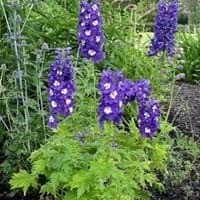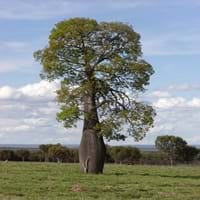Life Span
Perennial
Biennial
Type
Flowering Plants, Ornamental Plants, Shrubs
Tree
Types
Not Available
Narrowleaf Bottle Tree, Pink Flame Tree, Rusty Kurrajong
Habitat
gardens, meadows
Subtropical climates, Subtropical forests
USDA Hardiness Zone
Not Available
9-11
AHS Heat Zone
12 - 6
12-9
Sunset Zone
Not Available
H1, H2, 15, 16, 17, 18, 19, 20, 21, 22, 23, 24
Habit
Upright/Erect
Upright/Erect
Minimum Width
Not Available
Flower Color
Blue, Indigo, Lavender, Light Purple
Crimson, Orange Red
Flower Color Modifier
Bicolor
Bicolor
Fruit Color
Not Available
Dark Red, Sienna, Chocolate
Leaf Color in Spring
Green
Not Available
Leaf Color in Summer
Light Green
Red, Green, Light Green
Leaf Color in Fall
Green, Yellow green
Green
Leaf Color in Winter
Green, Light Yellow, Tan
Green
Leaf Shape
Palmate and toothed
Lobed
Plant Season
Spring, Summer, Fall, Winter
Spring, Summer
Sunlight
Full Sun, Partial Sun
Full Sun, Partial Sun
Type of Soil
Clay, Loam, Sand
Loam, Sand
The pH of Soil
Acidic, Neutral, Alkaline
Acidic, Neutral
Soil Drainage
Well drained
Well drained
Bloom Time
Not Available
Early Spring, Spring, Late Spring, Early Summer
Tolerances
Heat And Humidity
Pollution, Drought
Where to Plant?
Ground, Pot
Ground
How to Plant?
Seedlings, Stem Cutting
Grafting, Seedlings
Plant Maintenance
Medium
Medium
Watering Requirements
It cannot sustain wet-feet, Keep ground moist, Requires regular watering, Water more in summer
Average Water Needs, Do Not over Water, Requires regular watering
In Summer
Lots of watering
Lots of watering
In Spring
Moderate
Moderate
In Winter
Average Water
Average Water
Soil pH
Acidic, Neutral, Alkaline
Acidic, Neutral
Soil Type
Clay, Loam, Sand
Loam, Sand
Soil Drainage Capacity
Well drained
Well drained
Sun Exposure
Full Sun, Partial Sun
Full Sun, Partial Sun
Pruning
Cut away fading foliage, Do not prune during shooting season, Remove damaged leaves, Remove deadheads
Remove branches, Remove damaged leaves, Remove dead branches, Remove dead leaves, Remove dead or diseased plant parts, Remove deadheads
Fertilizers
High-phosphorous fertilizers used, Organic Flower Fertilizer
Nitrogen
Pests and Diseases
Bacterial leaf spot, fungus, Mealybugs
Red blotch
Plant Tolerance
Heat And Humidity
Drought, Pollution
Flower Petal Number
Single
Single
Foliage Texture
Fine
Medium
Foliage Sheen
Matte
Glossy
Attracts
Butterflies
Hummingbirds
Allergy
Severe allergen, Skin irritation, Skin rash, Throat itching, Vomiting
allergic reaction, Skin irritation
Aesthetic Uses
Beautification, Borders, Showy Purposes, Used for decorating walls, fences, gates, hedges, etc.
Showy Purposes
Beauty Benefits
Not Available
Not Available
Environmental Uses
Air purification
Air purification, Nesting sites for birds, Shadow Tree, Wildlife
Medicinal Uses
Not Available
Not Available
Part of Plant Used
Flowers
Root, Seeds
Other Uses
Used in making blue ink
Used as Ornamental plant
Used As Indoor Plant
No
No
Used As Outdoor Plant
Yes
Yes
Garden Design
Edging, Feature Plant
Feature Plant, Shade Trees, Street Trees, Tropical
Botanical Name
Delphinium elatum
BRACHYCHITON rupestris
Common Name
Alpine delphinium, Delphium, Candle larkspur, Siberian larkspur, Musk Larkspur,
Australian Flame Tree, Flame Bottle Tree, Illawarra Flame Tree
In Hindi
अल्पाइन Delphinium
बोतल ट्री
In German
Alpine Delphinium
Flaschenbaum
In French
Alpine Delphinium
Bouteille Arbre
In Spanish
Alpine Delphinium
Árbol de la botella
In Greek
Alpine Δελφίνιο
Μπουκάλι Δέντρο
In Portuguese
Alpine Delphinium
Bottle Tree
In Polish
Alpine Delphinium
Butelka Drzewo
In Latin
Alpine Delphinium
Utrem ligno
Phylum
Tracheophyta
Magnoliophyta
Class
Magnoliopsida
Magnoliopsida
Order
Ranunculales
Malvales
Family
Ranunculaceae
Sterculiaceae
Genus
Delphinium
brachychiton
Clade
Angiosperms, Eudicots
Angiosperms, Eudicots, Rosids
Tribe
Not Available
Sterculieae
Subfamily
Not Available
Sterculioideae
Properties of Alpine Delphinium and Bottle Tree
Wondering what are the properties of Alpine Delphinium and Bottle Tree? We provide you with everything About Alpine Delphinium and Bottle Tree. Alpine Delphinium doesn't have thorns and Bottle Tree doesn't have thorns. Also Alpine Delphinium does not have fragrant flowers. Alpine Delphinium has allergic reactions like Severe allergen, Skin irritation, Skin rash, Throat itching and Vomiting and Bottle Tree has allergic reactions like Severe allergen, Skin irritation, Skin rash, Throat itching and Vomiting. Compare all the properties and characteristics of these two plants. Find out which of these plant can be used as indoor plant. If you are interested to decorate your house and garden, find out aesthetic uses, compare them and select the plant which will beautify your surrounding. Along with beautification, try comparing medicinal and edible uses of Alpine Delphinium and Bottle Tree and you can choose the plant having best and most benefits.
Season and Care of Alpine Delphinium and Bottle Tree
Season and care of Alpine Delphinium and Bottle Tree is important to know. While considering everything about Alpine Delphinium and Bottle Tree Care, growing season is an essential factor. Alpine Delphinium season is Spring, Summer, Fall and Winter and Bottle Tree season is Spring, Summer, Fall and Winter. The type of soil for Alpine Delphinium is Clay, Loam, Sand and for Bottle Tree is Loam, Sand while the PH of soil for Alpine Delphinium is Acidic, Neutral, Alkaline and for Bottle Tree is Acidic, Neutral.
Alpine Delphinium and Bottle Tree Physical Information
Alpine Delphinium and Bottle Tree physical information is very important for comparison. Alpine Delphinium height is 200.00 cm and width Not Available whereas Bottle Tree height is 2,743.20 cm and width 1,500.00 cm. The color specification of Alpine Delphinium and Bottle Tree are as follows:
Alpine Delphinium flower color: Blue, Indigo, Lavender and Light Purple
Alpine Delphinium leaf color: Green
Bottle Tree flower color: Crimson and Orange Red
- Bottle Tree leaf color: Not Available
Care of Alpine Delphinium and Bottle Tree
Care of Alpine Delphinium and Bottle Tree include pruning, fertilizers, watering etc. Alpine Delphinium pruning is done Cut away fading foliage, Do not prune during shooting season, Remove damaged leaves and Remove deadheads and Bottle Tree pruning is done Remove branches, Remove damaged leaves, Remove dead branches, Remove dead leaves, Remove dead or diseased plant parts and Remove deadheads. In summer Alpine Delphinium needs Lots of watering and in winter, it needs Average Water. Whereas, in summer Bottle Tree needs Lots of watering and in winter, it needs Average Water.





